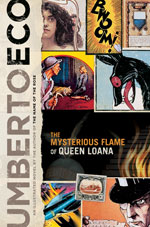DFC Intelligence is a game industry research company that produces reports for sale. They have some articles online for free like Monthly Briefing on “Who will benefit from the growth of online game subscription revenue?” (March 7, 2006). This briefing article makes some interesting points, including, “Most notably, over 50% of online game subscription revenue in 2005 came from Asian countries outside Japan, most notably South Korea, China and Taiwan.”
A welcome caveat in the article,
The online game market has supposedly been on the cusp of booming for 20 years or so. There has been a great deal of trial and error in getting the market to where it is today. Many of the success stories have seemingly come out of nowhere. Future growth will require companies to take some significant risky investments. Most companies that have invested with a conscious goal of growing their online game business have not been successful. Right now there is even a question of whether traditional publishers need online games for growth over the next several years.

 There is no seeping fear like the first year you teach school. Reading
There is no seeping fear like the first year you teach school. Reading  What if you only remembered what you had read? In Umberto Eco’s latest novel, The Mysterious Flame of Queen Loanna, the narrator Bodoni wakes from a stroke with no memories other than the cultural ones – what he, an antiquarian book collector, has read. The first two parts of this novel dramatize the personal (and its loss) in memory. What if memory were only a hypertext of associations like Bodoni’s memories? What makes a memory meaningful? What gives it the “mysterious flame” of immortality?
What if you only remembered what you had read? In Umberto Eco’s latest novel, The Mysterious Flame of Queen Loanna, the narrator Bodoni wakes from a stroke with no memories other than the cultural ones – what he, an antiquarian book collector, has read. The first two parts of this novel dramatize the personal (and its loss) in memory. What if memory were only a hypertext of associations like Bodoni’s memories? What makes a memory meaningful? What gives it the “mysterious flame” of immortality?